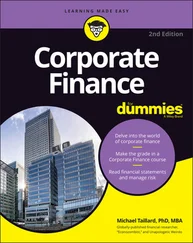Individuals make decisions, although typically suboptimal ones, by simplifying the choices presented to them, typically using a subset of the information available, and discarding some (usually complicated but potentially good) alternatives to get down to a more manageable number. They are content to find a solution that is “good enough” rather than arriving at the optimal decision. In doing so, they may (unintentionally) bias the decision-making process. These biases may lead to irrational behaviors and flawed decisions. In the investment realm, this happens a lot; many researchers have documented numerous biases that investors have. This chapter will introduce these biases, which we will review in the coming chapters, and highlight the importance of understanding them and dealing with them before they have a chance to negatively impact the investment decision-making process.
Behavioral Biases Defined
The dictionary defines a “bias” in several different ways, including: (a) a statistical sampling or testing error caused by systematically favoring some outcomes over others; (b) a preference or an inclination, especially one that inhibits impartial judgment; (c) an inclination or prejudice in favor of a particular viewpoint; and (d) an inclination of temperament or outlook, especially, a personal and sometimes unreasoned judgment. In this book, we are naturally concerned with biases that cause irrational financial decisions due to either: (1) faulty cognitive reasoning or (2) reasoning influenced by emotions, which can also be considered feelings, or, unfortunately, due to both. The first dictionary definition (a) of bias is consistent with faulty cognitive reasoning or thinking, while (b), (c), and (d) are more consistent with impaired reasoning influenced by feelings or emotion .
Behavioral biases are defined, essentially, the same way as systematic errors in judgment. Researchers distinguish a long list of specific biases and have applied over 100 of these to individual investor behaviors in recent studies. When one considers the derivative and the undiscovered biases awaiting application in personal finance, the list of systematic investor errors seems very long indeed. More brilliant research seeks to categorize these biases according to a meaningful framework. Some authors refer to biases as heuristics (rules of thumb), while others call them beliefs, judgments, or preferences. Psychologists' factors include cognitive information processing shortcuts or heuristics, memory errors, emotional and/or motivational factors, and social influences such as family upbringing or societal culture. Some biases identified by psychologists are understood in relation to human needs such as those identified by Maslow—physiological, safety, social, esteem, and self-actualizing. In satisfying these needs, people will generally attempt to avoid pain and seek pleasure. The avoidance of pain can be as subtle as refusing to acknowledge mistakes in order to maintain a positive self-image. The biases that help to avoid pain and instead produce pleasure may be classified as emotional. Other biases are attributed by psychologists to the particular way the brain perceives, forms memories, and makes judgments; the inability to do complex mathematical calculations, such as updating probabilities; and the processing and filtering of information.
This sort of bias taxonomy is helpful as an underlying theory about why and how people operate under bias, but no universal theory has been developed (yet). Instead of a universal theory of investment behavior, behavioral finance research relies on a broad collection of evidence pointing to the ineffectiveness of human decision making in various economic decision-making circumstances.
Why Understanding and Identifying Behavioral Biases Is Crucial
By understanding the effects that behavioral biases have on the investment process, investors may be able to significantly improve their economic outcomes and attain stated financial objectives. As noted in Chapter 1, during my 30+ year career advising clients, I have found that recognizing and managing the most frequently occurring behavioral biases is crucial to obtaining financial success. For many years I have had my “Top 3” most common behavioral biases—Loss Aversion, Confirmation and Recency biases. Coincidentally, a recent study by Charles Schwab confirms my Top 3, albeit in a slightly different order as can be seen in Figure 2.1which illustrates how often financial advisors see each bias in the clients they serve. If you are short on time, and you want to only review the most common biases, skip ahead to the chapters containing Loss Aversion, Confirmation, and Recency biases.

Figure 2.1Most Significant Behavioral Biases Affecting Client Investment Decisions 2019
Source: Charles Schwab
In my experience, simply identifying a behavioral bias at the right time can save investors from potential financial disaster. During my 30+, spanning numerous economic meltdowns, including but not limited to 1987 (my first year in the business), 1998, 2001, 2008–2009, 2018, and 2020, I've talked many of my clients “down from the ledge” and out of selling their risky assets at the wrong time due to irrational panic behavior. In fact, many of my long-time clients are now used to volatility and do not panic. They look at market drops as buying opportunities. This behavior-modifying advice has helped investors to reach their financial goals. In other cases, I was able to identify a behavioral bias or a group of biases and decided to adapt to the biased behavior so that overall financial decisions improved and the most appropriate portfolios were built—that is, one the investors could stick to over time. It is crucial for you to understand how you make decision to build the best portfolio for you. For example, some investors have a gambling instinct, or want to take risks with some of their capital. My advice in many of these cases is to carve out a small percentage of the portfolio for risky bets, leaving the vast majority of wealth in a prudent, well-organized portfolio. In short, knowledge of the biases reviewed in this book and the modification of or adaption to irrational behavior may lead to superior results.
How to Identify Behavioral Biases
Biases can be diagnosed by means of a specific series of questions. In this book, Chapters 3through 22contain a list of diagnostic questions to determine susceptibility to each bias. In addition, a case-study approach is used to illustrate susceptibility to biases is given with advice on how to build portfolios. In either case, investors who wish to incorporate behavioral analysis into their portfolio management practices will need to administer diagnostic “tests” with utmost discretion, especially at the outset of a relationship. When one becomes very good at diagnosing irrational behavior, it can be done without fanfare or much notice. As one gets to know their biases, better portfolio outcomes are the result.
Categorization of Behavioral Biases
In its simplest form, cognitive biases are those biases based on faulty cognitive reasoning (cognitive errors), while emotional biases are those based on reasoning influenced by feelings or emotions. Cognitive errors stem from basic statistical, information processing, or memory errors; cognitive errors may be considered to be the result of faulty reasoning. Emotional biases stem from impulse or intuition; emotional biases may be considered to result from reasoning influenced by feelings. Behavioral biases, regardless of source, may cause decisions to deviate from the assumed rational decisions of traditional finance. A more elaborate distinction between cognitive and emotional biases is made in the next section.
Читать дальше













